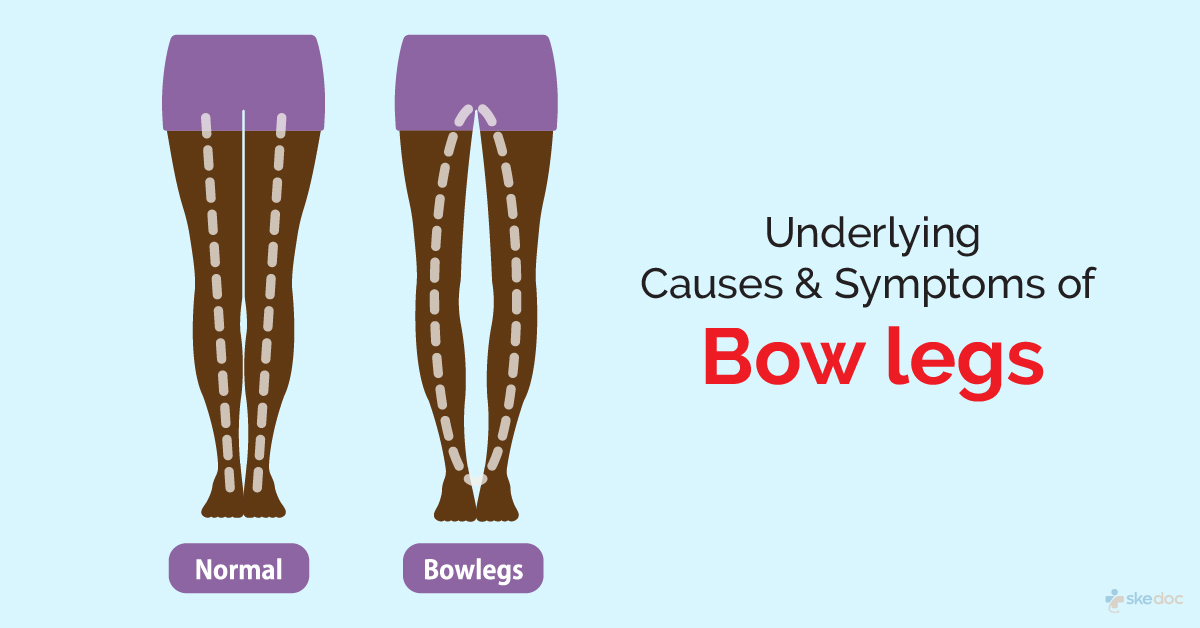Allergy
Blood Diseases
Bone & Joints
Brain
Cancer
Child Care
Cosmetic Surgery
Diabetes
Endocrinology
ENT
Eye
Gen Medicine
General Surgery
Heart
Kidney
Lifestyle
Liver & Digestive
Lung
Men’s Health
Mental health
Physiotherapy
Rheumatology
Skin and hair
Sleep Disorders
Spine
Transplant
Women Health
Thyroid
Vascular Surgery
Bow Legs

What are Bow Legs?
Bow Legs is a deformity of the lower legs that presents as an outward bending of the knee and the angling of the leg towards the inside in relation to the axis of the thigh, thereby giving an appearance of an archer’s bow. The condition is sometimes seen in children (physiological genu varum), and they outgrow it after 2 years. However, in some individuals, the condition persists into adulthood or may be caused by other conditions (pathological genu varum).
Alternate names
- Genu Varum
- Bandy Legs
- Tibia Vara
Is Bow Legs Condition a Medical Emergency?
Bow Legs are not a medical emergency.
Types
Bow Legs may be of the following types
- Physiologic genu varum: Naturally occurring, self-correcting, and seen in children below 2 years
- Pathological genu varum: It is caused due to other medical conditions
Causes
In normal anatomy, the knee faces forward with the centre of gravity passing through it so that the body weight, when standing, is evenly distributed on both sides of the lower limb with the knee in the centre. In Bow Legs, there is an outward drifting of the knee. The centre of gravity passes only through the inner side of the knee or sometimes does not even cross it in extreme cases, resulting in the body weight being loaded on the inner side of the femur and tibia. When this occurs in childhood, it results in improper growth of the bones and stretching of the ligaments. The improper distribution of weight results in a waddling gait, knee pain, inward turning of toes, and a lateral thrusting of the knees.
Some factors that can result in bow legs include:
- Blount disease
- Rickets
- Achondroplasia
- Digestive disorders such as celiac sprue
- Bone infections or tumors
Risk factors
Factors that increase the risk of bow legs include
- Trauma
- Occupations such as jockeying
- Accidents involving the condyles of the femur
- Congenital abnormalities
- Rheumatic disease
- Postoperative complications
- Fluoride or lead poisoning
Symptoms & signs
The symptoms and signs include
- Outward bending of the knee
- Bow shaped appearance
- Lateral thrusting of the knee during movement
- Waddling gait
- Inward pointing of the toes
- Pain in the knee, hip and ankle joints
Investigations
No specific investigations are advised for evaluating bow legs other than plain radiography, which measures the hip-knee ankle angle.
Diagnosis
Bow legs are diagnosed based on medical history and clinical evaluation.
Treatment options
No treatment is required for physiologic genu varum, as the condition is corrected by the age of 2 years. If the condition persists beyond 3 years, treatment is advised and may include surgical interventions and guided growth.
Interventional including surgery and indications for surgery
Surgical interventions for the management include
- Guided growth or temporary hemiepiphysiodesis: It is done to restore the mechanical axis to the centre of the knee by placing plate implants near the epiphysis of the tibia; the process can take 6-24 months
- Osteotomy procedures: When the epiphyses have already closed or when skeletal maturity has occurred, correction is achieved by cutting sections of the femur, tibia and fibula to realign the bones and get the mechanical axis back in the centre line of the knee.
Role of diet/ Exercise/ Lifestyle changes/ Preventive measures
Some measures that can be taken for the management of bow legs
- Ensure that a growing child has sufficient exposure to sunlight for vitamin D and is eating a healthy and nutritious diet
- Avoiding childhood obesity
Complications
Some complications associated with bow legs include
- Chronic knee pain
- Abnormal gait
Prognosis
The prognosis for bow legs is generally very good, with proper management and care when initiated at the right time. It also depends on the underlying cause and the individual's general health.
When to contact the doctor or hospital? / How to identify the emergency or complications?
It is advisable to seek medical attention if a condition of bowing of legs is observed in children and persists beyond the age of 2-3 years.
Indications for hospitalization if required
Hospitalization is not required for the management of Bow Legs.
Suggested clinical specialist/ Department to consult for this condition
Orthopaedics
Was this article helpful?
YesNo




